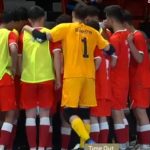The revolutionary revival of the Enlightenment movement is considered a rare and unique phenomenon in the contemporary history of Afghanistan. The civil and non-violent movement that arose against one of the biggest examples of discrimination, reached its peak and finally, under the influence of many factors, it declined and disappeared from the scene.
Bamyan province, which was the leader of the time in civil movements demanding justice and seeking rights against injustices and discriminations and had become a famous city, joined it along with the formation of this great and global movement and marked the biggest and longest civil movement in the history of this province.
The formation of the Enlightenment Movement Council in Bamyan was accompanied by great pomp and gathering. In one of the first meetings of this organization, a large number of citizens, including civil activists, members of political parties, university professors, influential people, educators and active university students, including men and women, were present, and its organizational structure, which was established in the Grand Mosque of Rahbar Shahid, consisting of about ten committees and with the membership of nearly ten people in each committee. The created council came to the field with exemplary motivation and energy and in a short period of time successfully managed to launch several large protest movements in Bamyan and literally put the central and local government under double pressure. The pressure caused by these justice-seeking movements was to such an extent that the first-rank officials of the local government knelt before the people and were forced to support it by being in the crowd of protesters.
The ability, will and effectiveness of the protest movements of the Enlightenment movement were such that other civil and protest groups that showed occasional reactions on various occasions with a small number, both in Kabul and Bamyan, all went into isolation and were digested in this large and inclusive movement.
The excessive and increasing weakness of the corrupt and divisive government of Ghani, which had once experienced the power of the people’s will in the case of the killing of innocent civilians in Zabul and the formation of the Tabssom movement, and had seen the wind of its fall, caused Ghani and the fanatical and ethnocentric circle of the Arg. As always, they saw the solution in the use of trickery and deception and sought to benefit from the biggest historical weakness of Afghan citizens, especially the Hazaras. The politics of greed and bargaining finally worked, and with the hidden but brighter-than-day deals of political parties related to Hazaras, the back of the Enlightenment movement was broken and its downward trend was keyed.
The weakening and fragmentation in the Central Council of the Enlightenment Movement in Kabul had a very heavy and unfortunate impact on Provincial Council of the Enlightenment Movement in Bamyan, and this institution soon lost its past power and strength. The official structure of the council fell apart and a large number of active forces, including university professors, civil activists, members of political parties and others, left the battle field. In the following, some of these people, following the government or the leaders of political parties, stood up to the Enlightenment movement and destroyed it, while others went into isolation and chose neutrality.
With the decrease in the number of members of Provincial Council of Bamyan and its severe weakening, the local government also realized this, and along with the central government and following the same policy of trickery, deception, threats and bribery, sought to suppress and eliminate the council.
The policy of bribery was very effective and soon it was revealed that some members of the council had turned to espionage. All meetings of the council were fully recorded and provided to the provincial administration and security departments. The report of the council’s activities regularly reached the local government and they implemented preventive measures. Gradually, many groups left the Enlightenment movement. Some of these people were appointed to government positions and others preferred to be close to the government and destroyed the Council.
Civil activists of Bamiyan all left the Provincial Council of the Enlightenment Movement under the pressure of the local government. While they themselves were not able to launch any movement or deliberately did not want to stand by the people and defend their rights.
The local government of Bamyan used a number of citizens of Bamyan who were present in the governor office in different ways, as elders and influential people of Bamyan against the Provincial Council of the Enlightenment Movement and took legitimacy from them in their repressive, oppressive and autocratic actions.
Every time the Provincial Council of the Enlightenment Movement held a protest movement, the local government, after receiving detailed reports from the spies, summoned these people known as the elders and influential people of Bamyan, and by convening a seemingly popular meeting, they pursued the goal of neutralizing the Council’s plans. The interesting and important point is that because the logic and nature of the Enlightenment Movement was right and the struggle of this movement was carried out in the direction of realizing justice and eradicating discrimination, the circle of “elders and influencers” in Bamyan could never get anywhere through reasoning and logic. They were always disgraced and shamed and they inevitably turned to paternal and moral advice common in the traditional society of Afghanistan, so that they might be able to create a barrier in the path of the enlightenment movement.
I clearly remember that the president of Bamyan University at the time, who actually attended the protest gatherings and threatened the students with failure and expulsion from the university, got angry in one of these meetings after his dictatorial behavior did not go anywhere and he displayed interesting violence.
What is more interesting is that some of the circle of “elders and influential people of Bamyan” had realized the truth of the purpose and mission of the Enlightenment movement, but they only maintained the appearance of the work in the demonstration meetings. After the end of one of the meetings, one of the university professors who is a member of the ring, he contacts the members of the lighting movement and while exposing the local government’s schemes, he stands in solidarity with the Enlightenment movement and apologizes for not being able to operate publicly due to some excuses.
The pressure of the local government had a great impact on public media. The vast majority of active journalists in Bamyan refused to cover the protest activities of the Enlightenment movement. Later, rumors were spread that the journalists were getting fuel and cash envelopes from the provincial administration in order to keep silent about the Enlightenment Movement and refrain from covering it in the news.
The government departments of that time had even threatened the printing houses of Bamyan markets to refrain from printing and doing cultural and promotional works of the Enlightenment movement.
As a result, being a member of the activities and supporting the Enlightenment Movement in Bamyan was officially criminalized. Therefore, every citizen who supported this movement had to pay very heavy costs and be isolated from the society.
Nevertheless, a small number of fighters of the Enlightenment movement, whose number reached to less than 20 people, by enduring all hardships, difficulties, conspiracies, conspiracies, destructions and even enduring prison and beatings, continued their relentless struggle until the last moment and never gave up. They did not empty the field of fighters. While the Central Council of the Enlightenment Movement in Kabul had practically disintegrated and no movement was being made, the Provincial Council of the Enlightenment Movement in Bamyan continued its struggle with all its strength and with a record of at least 5 years, the largest civil and protest movement in the contemporary history of Afghanistan and Bamyan.
History will be proud that in the presence of the protestors of the Enlightenment movement, Ashraf Ghani traveled by helicopter from the provincial office to the Shash Pol area. The pride of millions of discriminated citizens is that Ashraf Ghani limited his public meetings to the premises of the provincial administration. The pride of history is that the corrupt Ashraf Ghani opened the project of “alternative electricity” or the “deceit plan” by fearing the protesters of the lighting movement, in the evenings and using the light of car lights in the “Azhdar” area.











Read More
The Impact of U.S. Aid Cuts to Afghanistan
The Damages of Widespread Migration of Afghans to Foreign Countries
Commendable Initiative by the Ministry of Higher Education to Prevent Plagiarism